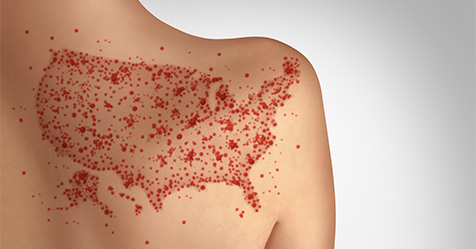U.S. Sees First Reported Death of a Human From Bird Flu
While tragic, a death from bird flu in the U.S. is not unexpected due to the potential for bird flu viruses to cause severe illness.
On Monday, the Louisiana Department of Health reported a hospitalized patient infected with bird flu had died. This marks the first reported death of a human from the virus in the U.S.
Health officials said the patient was over the age of 65 with underlying medical conditions. The patient contracted bird flu after exposure to a combination of a noncommercial backyard flock and wild birds.
Health officials have no evidence of person-to-person transmission, and this patient remains the only human case of bird flu in Louisiana, which has now spread to 10 states. The U.S. Centers for Disease Control (CDC) continues to assess that the risk to the public remains low. Additionally, no concerning virologic changes are actively spreading in wild birds, poultry, or cows that would raise the risk to human health.
However, people with job-related or recreational exposures to infected birds or other animals are at greater risk of infection. For these and others, CDC has developed prevention resources about how to protect yourself.
While tragic, the CDC said a death from bird flu in the U.S. is not unexpected because of the known potential for infection with these viruses to cause severe illness and death. As of Jan. 6, the CDC has confirmed 66 human cases of bird flu in the U.S. since 2024 and 67 since 2022. Outside the U.S., more than 950 cases of bird flu have been reported to the World Health Organization; about half of those have resulted in death.
Late last year, the CDC reported the Louisiana patient was infected with the D1.1 clade of the bird flu virus, a strain that is circulating in wild birds and poultry and different from the variant circulating in dairy cattle. Genetic analysis of the virus that infected the Louisiana patient found changes expected to enhance its ability to infect the upper airways of humans and help it to spread more easily from person to person. Those same changes were not seen in the birds the person had been exposed to, the CDC said, indicating that they had developed after the person was infected.
Scientists also don’t know whether D1.1 is associated with more severe disease in people, CNN reported. D1.1 also infected a teenager who was hospitalized in Canada and has since recovered. But the D1.1claude also infected a poultry worker in Washington who exhibited only mild symptoms.
Moving forward, the CDC continues to:
- Support critical epidemiologic investigations with state and local partners to assess the public health impact of each bird flu case.
- Work with state and local partners to conduct active surveillance for bird flu cases.
- Monitor for changes that might suggest bird flu viruses are becoming better adapted to mammals and therefore might spread more easily from animals-to-humans or human-to-human or cause more severe disease.
- Monitor for any viral changes that could make these viruses less responsive to flu antiviral medications or the available candidate vaccine viruses.
As CMM previously reported, in December, the U.S. Department of Agriculture also issued a federal order requiring that raw (unpasteurized) milk samples nationwide be collected and shared with the agency for testing.


